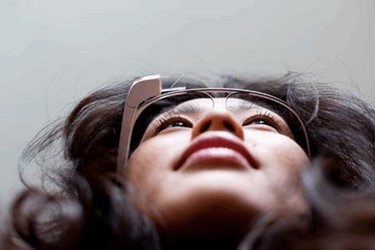VR: It's Virtually A Reality
By Sunny Jiang, EyeBuyDirect

Make no mistake: virtual reality is no longer futuristic or advanced. It’s contemporary and it’s an increasingly influential tool in the marketing arena. However, the difference between VR and other ‘must-have’ technologies in this domain, is that its full potential is still being discovered. So, while you have no time to lose when it comes to mastering the likes of social media or machine learning, there is scope and time for tweaking when it comes to this particular trend.
This largely stems from the fact that VR technologies are still evolving… with HTC’s Vive, the Oculus Rift, Google Cardboard and Samsung’s Gear series the tone has been set to a mainstream commercial perspective and will inevitably progress further in the years to come, but there has been very little guidance up to this point in how to optimize such applications in the retail realm.
In essence, taking a punt and having a play around with the trend is not a bad thing at this point, basing your strategy around your own individual needs, rather than the differentiators of a technology.
At EyeBuyDirect, our sunglasses collection already comes with a virtual try-on application to enable consumers to explore the most suitable frames and styles that fit their preferences. Epitomizing the wider sector’s adoption of VR so far, this is an initial move into the virtual, interactive world, and it’ll soon be complemented by new technologies being released in December, in order to keep ahead of the industry curve.
A Trial And Error Approach
A key aspect facilitating retailers’ ‘dabbling’ with the application at present, is the relatively low outlay needed to integrate VR. Because of the immediate competition in the market and the fact that numerous sectors are embracing it already, major players like Google, Samsung and HTC can already bring their products’ price points down to affordable levels, for both consumer and business segments alike.
From a B2B perspective where the exact advantages and data-driven successes are findings-in-progress, a relatively cheap implementation is hugely appealing, and actually promotes more of a ‘trial and error’ approach in these early days. After all, it’s very unlikely that consumers will be entirely put off by an added VR function, so you won’t be losing any customers. The key will be in finding just how much different approaches to virtual reality adoption boost sales in the coming months.
Try Before You Buy
Of course, augmented reality (AR) should also be added to the mix when discussing VR in a retail setting, and while both are in their nascency, there are already clear trends emerging of where and how to implement these technologies as an initial opening gambit.
It can work both in store and online, too. Essentially, it’s the closest the industry has ever come to offering a ‘try before you buy’ service. For fashion or our specific eye care products, it’s one thing to be able to gauge how something might suit or fit. But imagine the same possibilities when it comes to furniture or decoration.
To be walking around a department store seeking out the perfect new sofa but wondering if it will fit within your living room surroundings, or whether it will complement your coffee table, may be a thing of the past. While not many companies can bring this exact level of realization just yet, it’s certainly the way we’re heading. AR will be able to facilitate this extent of ‘try before you buy’.
A prime example in the market currently is Apple’s ARKit series which is already preparing people for stage 2 and will completely bridge the online and the physical modes; testing products in your home before purchasing with all logistical and ergonomic boxes ticked.
Make Your Reality Virtual, Now
Magnolia Market is another renowned example of businesses going beyond ‘dabbling’ to present an apt portrayal of AR at its current best. And you only have to look at the app’s reviews to realize how appreciated this slight evolution of interactivity is among the consumer masses.
While VR and AR aren’t in the same category of necessity as social media and AI just yet, by not indulging in it at all, you’re still losing out.
A recent Retail Perceptions report found that 71 percent of shoppers would choose a provider more often if they provided augmented reality. 61 percent would choose those who offer AR over those who don’t. And 40 percent would even pay more for a product off the back of an AR-driven service.
Retailers are therefore in a win-win situation. You can enter this new reality for next to no capital expenditure, there’s very little pressure on you to find the perfect application of it just yet, and, in just being seen to adopt it, you’re boosting your appeal in competitive markets.
However, as is always the case, the trend will develop to a point of extreme pressure points, and nuanced differentiators in the future. With this impending challenge on the horizon, there really is no time like the present to make your reality a virtual one.
About The Author
Sunny Jiang is the CEO of EyeBuyDirect. An outstanding member of the company since 2007, she has successfully progressed from finance to operations, to the management division before achieving her current position. Sunny loves the challenges, diverse projects, and inspirational colleagues that come with her job. Outside of the office, she enjoys an active lifestyle and can be found swimming, running, or cultivating her knowledge through business books and biographies.
